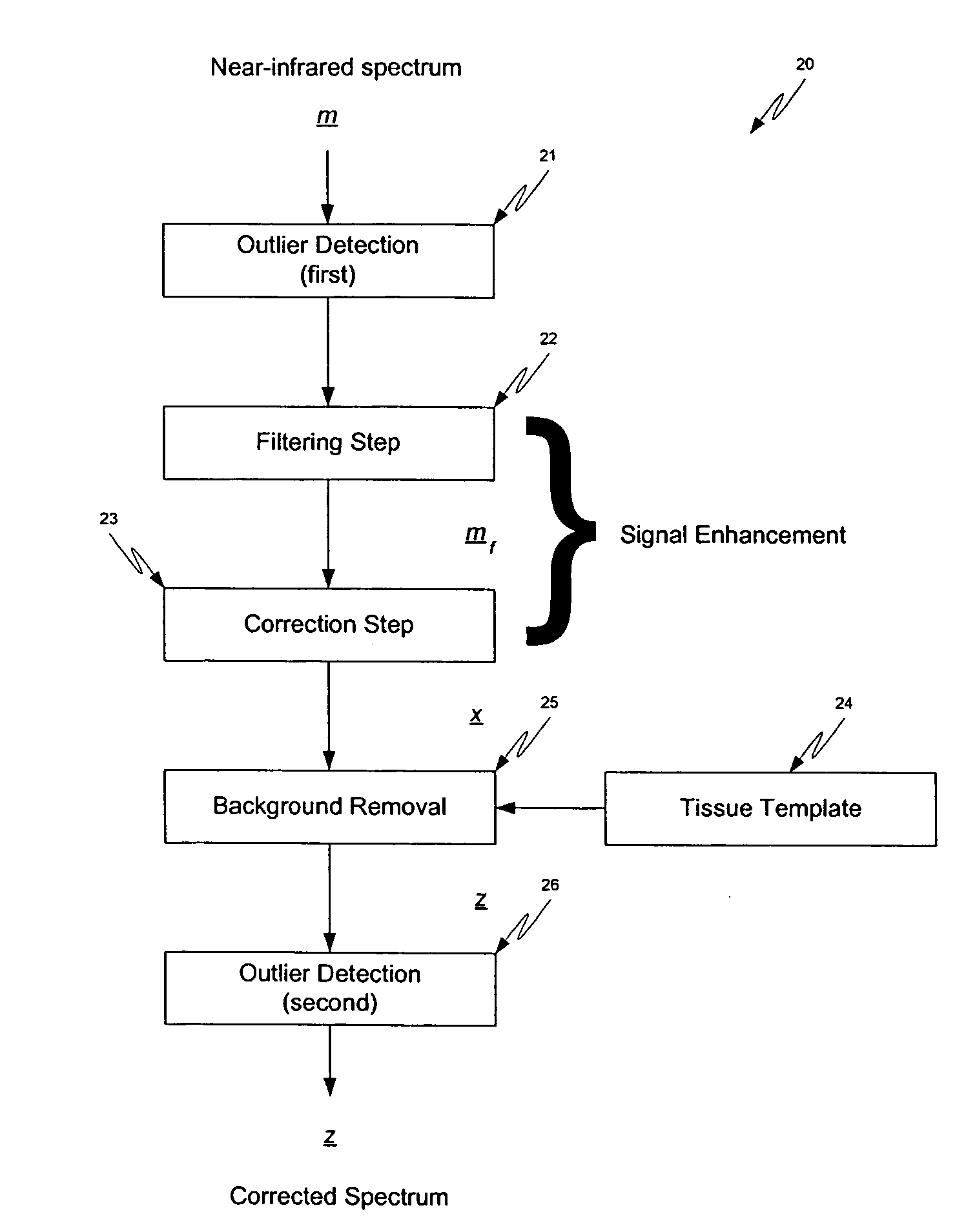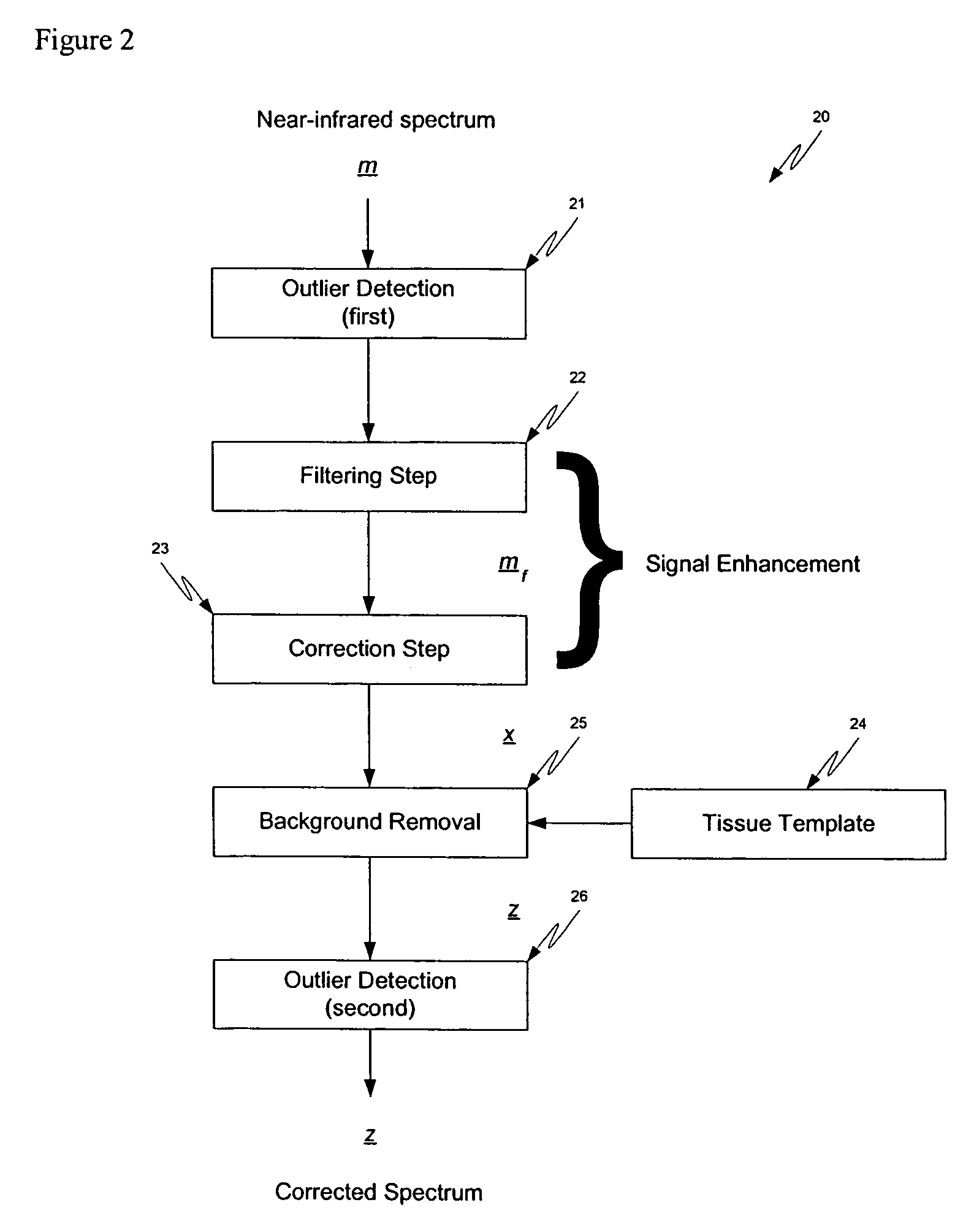Method of processing noninvasive spectra
a spectroscopic and non-invasive technology, applied in the field of spectroscopic data processing technology, can solve the problems of not yet certified non-invasive techniques for self-monitoring of blood glucose, current monitoring techniques discourage regular use, limitations cited affecting the acceptance of such a method as a commercial produ
- Summary
- Abstract
- Description
- Claims
- Application Information
AI Technical Summary
Benefits of technology
Problems solved by technology
Method used
Image
Examples
example i
[0081]In one example, the following steps are performed to process the spectra:[0082]averaging spectra;[0083]correcting dead pixels;[0084]calculating absorbance;[0085]performing x-axis standardization;[0086]uniformly re-sampling the spectrum to standardize the x-axis;[0087]performing a first (gross) outlier detection;[0088]correcting the spectrum;[0089]performing a wavelength selection;[0090]removing interference; and[0091]performing a second (fine) outlier detection.
[0092]The order of the steps is optionally varied to a limited degree. For example, the wavelength selection step is optionally performed out of sequence, such as after the second outlier detection or before any of the earlier steps. In addition, not all steps are required. For example, correcting dead pixels is not appropriate to some analyzers. As a second example, conversion to absorbance is not always required, nor are other steps.
PUM
 Login to View More
Login to View More Abstract
Description
Claims
Application Information
 Login to View More
Login to View More - R&D
- Intellectual Property
- Life Sciences
- Materials
- Tech Scout
- Unparalleled Data Quality
- Higher Quality Content
- 60% Fewer Hallucinations
Browse by: Latest US Patents, China's latest patents, Technical Efficacy Thesaurus, Application Domain, Technology Topic, Popular Technical Reports.
© 2025 PatSnap. All rights reserved.Legal|Privacy policy|Modern Slavery Act Transparency Statement|Sitemap|About US| Contact US: help@patsnap.com



